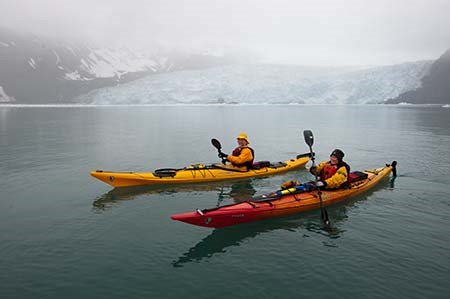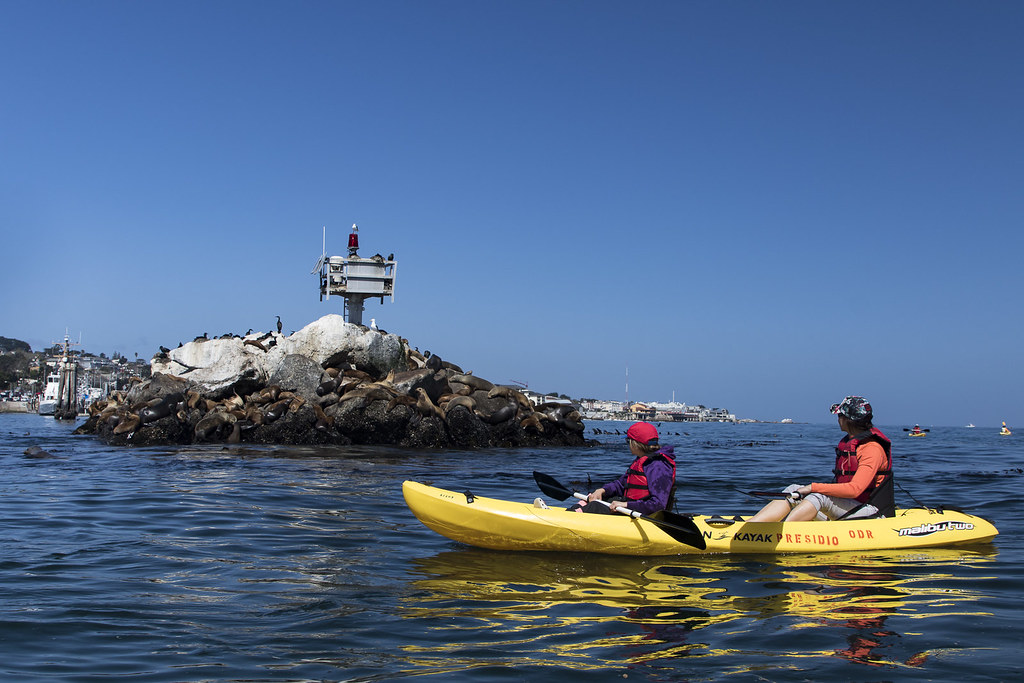There’s something incredibly exhilarating about kayaking in the ocean. The expansive blue waters, the rhythmic motion of the waves, and the serene moments of solitude make it a truly unforgettable experience. Whether you’re a seasoned paddler or a beginner, knowing the best times and tips can significantly enhance your adventure.
Key Takeaways
- 1
Kayaking in the ocean is best during early mornings and late afternoons for calmer waters and favorable weather conditions. - 2
Always check the weather forecast and tide schedules before planning your trip. - 3
Safety gear such as life vests, helmets, and communication devices are essential for a safe kayaking experience. - 4
Understanding basic navigation skills and having a clear route plan can prevent accidents. - 5
Respect marine life and adhere to conservation guidelines while kayaking.
Best Times for Kayaking in the Ocean
Choosing the right time for kayaking in the ocean can make a significant difference in your overall experience. The early mornings and late afternoons generally offer the most favorable conditions. During these times, the water is usually calmer, and the winds are lighter, making it easier for you to paddle and navigate.
Additionally, these times of the day provide some of the most stunning views, with the sunrise or sunset casting beautiful hues across the water. Early mornings can also mean fewer people, giving you a more peaceful and solitary experience.
Essential Gear for Ocean Kayaking
When it comes to kayaking in the ocean, having the right gear is crucial for both safety and enjoyment. Here’s a list of essential items you should have:
- Life Vest: A must-have for any kayaking adventure. Ensure it’s a proper fit and U.S. Coast Guard approved.
- Helmet: Protects your head from unexpected impacts.
- Communication Device: A waterproof VHF radio or a fully charged mobile phone in a waterproof pouch.
- Navigation Tools: A GPS device or a map and compass.
- First Aid Kit: For any minor injuries that might occur.
- Sun Protection: Sunscreen, sunglasses, and a hat are essential to protect against sunburn.
Additional Safety Tips
Safety should always be your top priority when kayaking in the ocean. Here are a few additional tips to keep in mind:
- Always let someone know your kayaking plans and expected return time.
- Check the weather and tide forecasts before heading out.
- Stay hydrated and bring enough water for your trip.
- Dress appropriately in layers, and consider a wetsuit for colder waters.
Understanding Ocean Currents and Tides
One of the most important aspects of kayaking in the ocean is understanding ocean currents and tides. These natural elements can significantly impact your kayaking experience. Currents are continuous, directed movements of seawater generated by various forces, such as wind, water density differences, and tides. Knowing how to navigate them can prevent you from drifting off course.
Before heading out, check the local tide tables. High tides can bring stronger currents and waves, making it more challenging to paddle. Low tides might expose rocks and other obstacles. Plan your trip around these factors to ensure a smoother journey.
For more detailed information on what to consider before embarking on your ocean kayaking adventure, visit Considerations before kayaking in the ocean (The definitive guide).
Choosing the Right Kayak
Selecting the right kayak is essential for a successful ocean kayaking experience. Ocean kayaks are typically longer and narrower than those used on lakes or rivers, providing better speed and stability in open water. Here are some features to look for:
- Length: Ocean kayaks are usually between 12 and 18 feet long for improved tracking and speed.
- Width: A narrower width reduces drag and increases efficiency.
- Storage: Adequate storage compartments for gear and supplies.
- Rudder or Skeg: Helps with steering and maintaining a straight course in windy conditions.
- Material: Consider lightweight yet durable materials like fiberglass or plastic.
For a comprehensive guide on choosing the right kayak, check out Canoe Vs Kayak: Key Differences, Benefits, And Choosing The Best One For You.
Basic Navigation Skills
Navigation is a crucial skill when kayaking in the ocean. Understanding how to read nautical charts, use a compass, and interpret GPS data can help you stay on course and avoid potential hazards. Here are some basic navigation tips:
- Always carry a waterproof map and a compass.
- Learn to read nautical charts, which provide detailed information about water depths, coastal features, and navigation aids.
- Use landmarks and natural features to help orient yourself.
- Practice using a GPS device before your trip.
For more tips on ocean kayaking, visit the Beginner’s Guide to Ocean Kayaking: Everything You Need to Know.
Emergency Preparedness
While kayaking in the ocean is generally safe, emergencies can happen. Being prepared can make a significant difference. Here are some tips:
- Carry a whistle or other sound-producing device to signal for help.
- Know how to perform a self-rescue and assist others in the water.
- Have a plan for re-entering your kayak if you capsize.
- Keep an emergency contact list in a waterproof case.
Respecting Marine Life
When kayaking in the ocean, it’s essential to respect the marine environment. Avoid disturbing wildlife, and adhere to conservation guidelines. Here are a few tips:
- Maintain a safe distance from marine animals.
- Avoid feeding wildlife as it can disrupt their natural behaviors.
- Dispose of trash properly to prevent pollution.
- Follow local regulations and guidelines to protect marine ecosystems.
For a more in-depth look at ocean kayaking, visit The Ultimate Beginner’s Guide to Sea Kayaking.
Kayak and Boat Safety
Safety is paramount when it comes to kayaking in the ocean. Here’s a quick guide to ensure you stay safe:

Image source: Kayak and Boat Safety – Kenai Fjords National Park (U.S. National Park Service)
- Always wear your life vest and helmet.
- Carry a whistle for emergency signaling.
- Know your limits and avoid challenging conditions beyond your skill level.
- Practice self-rescue techniques regularly.
For more safety tips, explore KAYAKING – Power Up Your Fitness.
Watch This: Ducking Very BIG Waves With Kayak (Turtle Rolls)
For a visual demonstration on handling big waves while kayaking in the ocean, check out this video:
This video shows expert techniques on how to manage large waves, ensuring you stay safe and enjoy your kayaking experience.
Best Locations for Ocean Kayaking in the U.S.
The United States offers some of the best spots for kayaking in the ocean. Here are a few top destinations:
- Monterey Bay, California: Known for its rich marine life and stunning coastal views. It’s a must-visit for any kayaking enthusiast.

Image source: Monterey Bay Ocean Kayaking | PRESIDIO OF MONTEREY, Californ… | Flickr
- Florida Keys: Offers clear waters, coral reefs, and abundant wildlife.
- San Juan Islands, Washington: Perfect for spotting orcas and other marine animals.
- Chesapeake Bay, Maryland: Known for its calm waters and scenic beauty.
Ocean kayaking is a fantastic way to explore nature, challenge yourself, and enjoy the beauty of the sea. By following these tips and choosing the best times, you’ll be well on your way to an unforgettable adventure. Always prioritize safety, respect the marine environment, and be prepared for whatever the ocean might throw your way.
Frequently Asked Questions (FAQs)
Should you kayak in the ocean?
Yes, kayaking in the ocean can be a thrilling and rewarding experience. However, it requires proper preparation, the right equipment, and an understanding of ocean conditions. Always prioritize safety and check the weather and tide forecasts before heading out.
How long should a kayak be for the ocean?
Ocean kayaks are typically between 12 and 18 feet long. The length provides better tracking and speed, which are essential for navigating open waters. A longer kayak is generally more stable and can handle rougher conditions better than a shorter one.
Has anyone crossed the ocean in a kayak?
Yes, there have been several notable crossings. For example, Aleksander Doba, a Polish adventurer, successfully crossed the Atlantic Ocean in a kayak multiple times. These journeys are highly challenging and require extensive preparation and expertise.
Can you travel the ocean in a kayak?
While traveling long distances in the ocean with a kayak is possible, it’s not recommended for beginners. Such journeys require advanced skills, thorough preparation, and an understanding of ocean navigation and survival techniques. For most kayakers, it’s best to stick to coastal areas and shorter trips.

